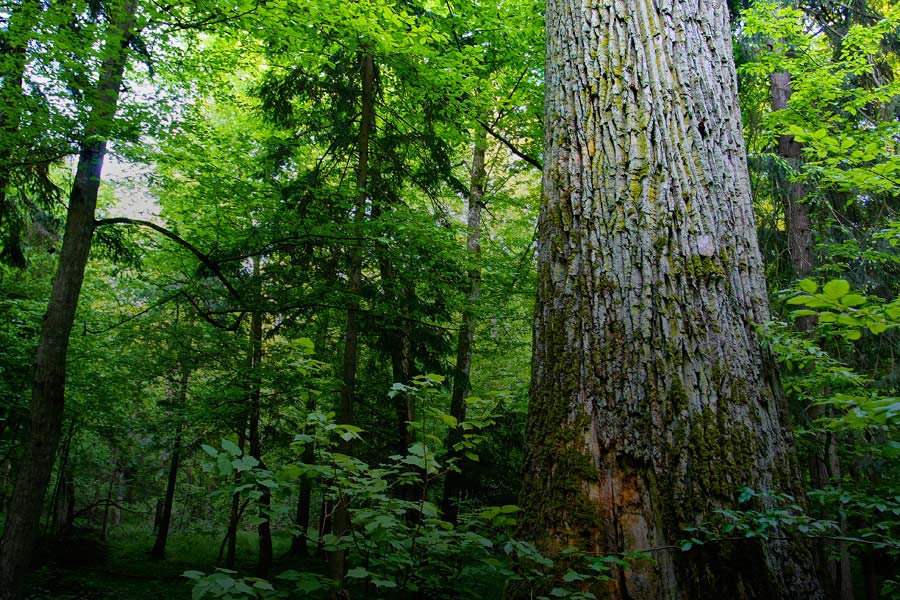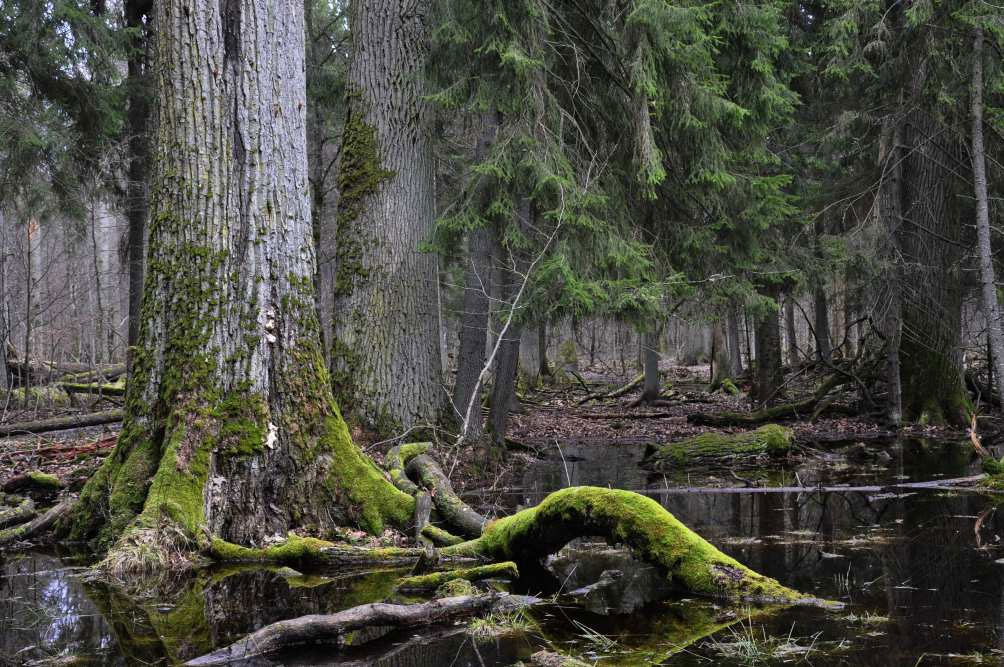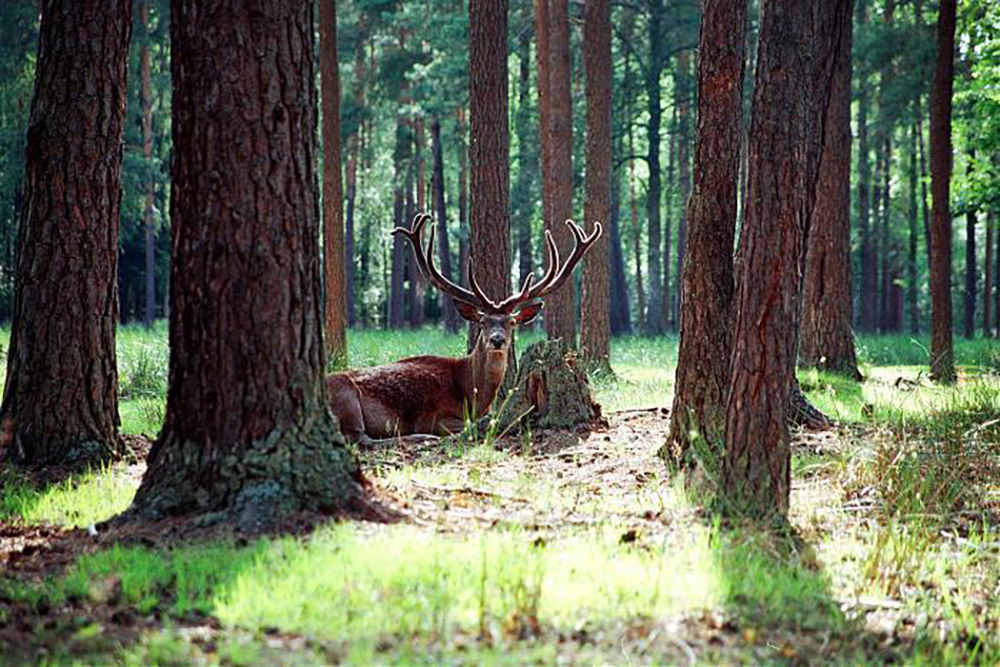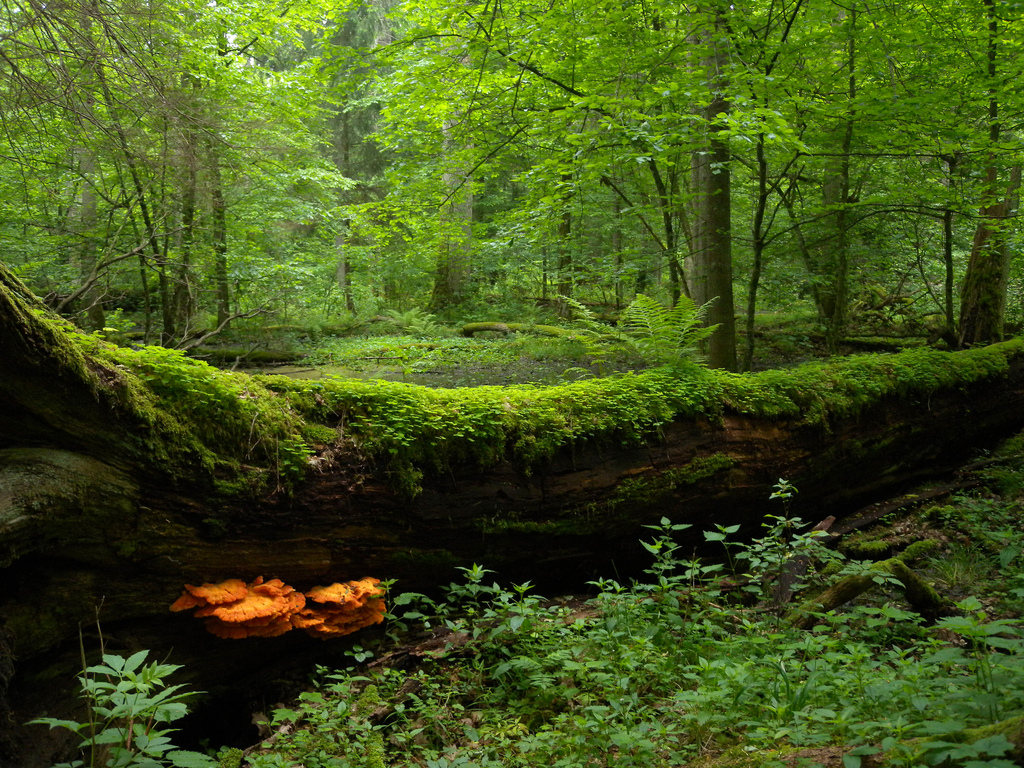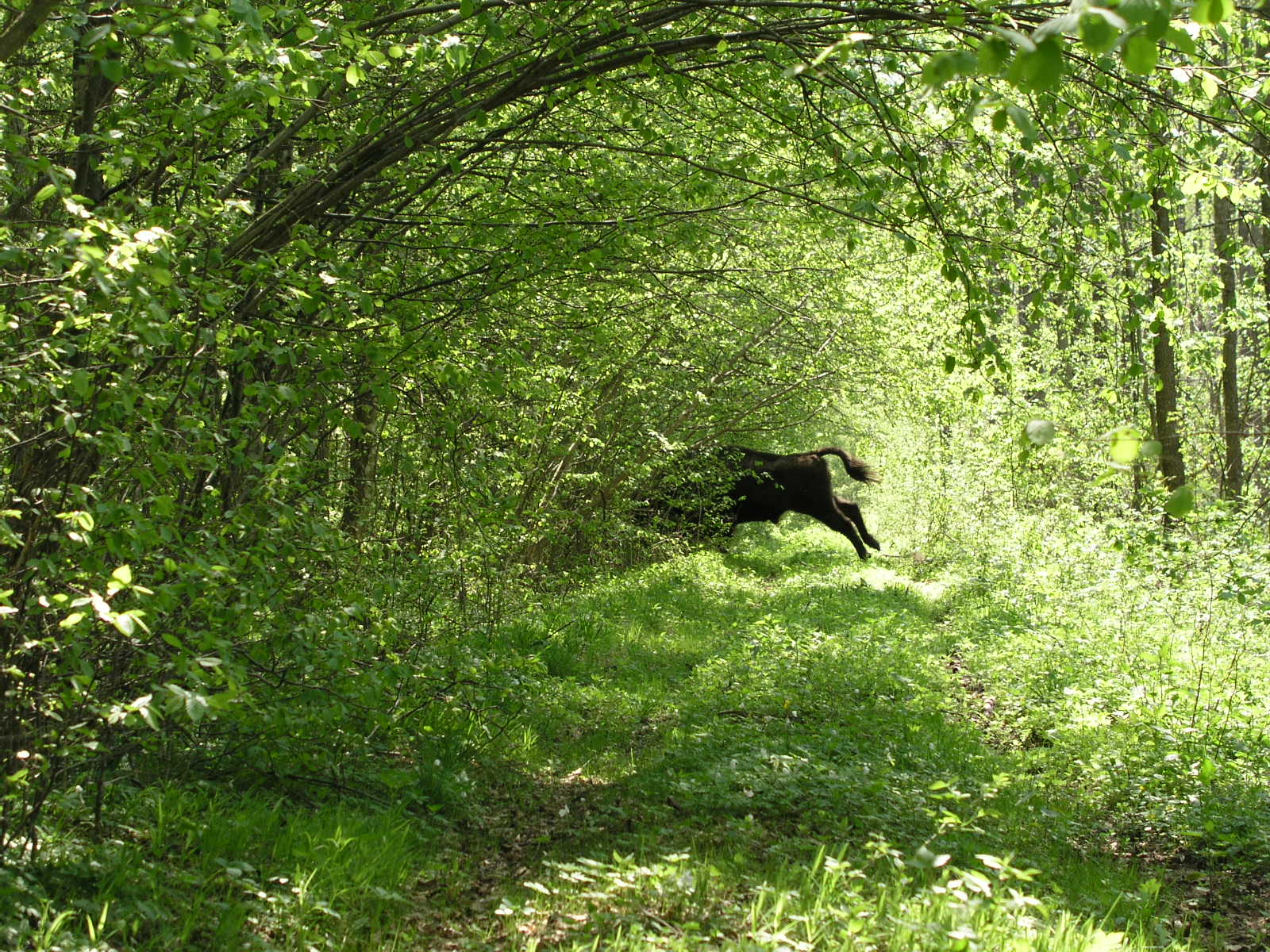Białowieża Forest is one of the last and largest remaining parts of the immense primeval forest that once stretched across the European Plain. The forest is home to 800 European bison, Europe's heaviest land animal. UNESCO’s Man and the Biosphere Programme (MAB) designated the Polish Biosphere Reserve Bialowieza in 1976 and the Belarusian Biosphere Reserve Belovezhskaya Puschcha in 1993. In 2015, the Belarusian Biosphere Reserve occupied the area of 216,200 ha (2,162 km2; 835 sq mi), subdivided into transition, buffer and core zones. The forest has been designated a UNESCO World Heritage Site and an EU Natura 2000 Special Area of Conservation. The World Heritage Committee by its decision of June 2014 approved the extension of the UNESCO World Heritage site “Belovezhskaya Pushcha/Białowieża Forest, Belarus, Poland”, which became “Białowieża Forest, Belarus, Poland”. It straddles the border between Poland (Podlaskie Voivodeship) and Belarus (Brest Voblast and Hrodna Voblast), and is 70 kilometres (43 miles) north of Brest, Belarus and 62 kilometres (39 miles) southeast of Białystok, Poland. The Białowieża Forest World Heritage site covers a total area of 141,885 ha (1,418.85 km2; 547.82 sq mi). Since the border between the two countries runs through the forest, there is a border crossing available for hikers and cyclists.
On the Belarusian side, the forest is protected as the Belovezhskaya Pushcha National Park with an area of 1,771 km2 (684 sq mi). The core, strictly protected, area covers 157 km2 (61 sq mi), the buffer zone 714 km2 (276 sq mi), and the transition zone 900 km2 (350 sq mi); the National Park and World Heritage Site comprises 876 km2 (338 sq mi). Belovezhskaya pushcha headquarters at Kamyanyuki include laboratory facilities and a zoo where European bison (reintroduced into the park in 1929), konik (a semi-wild horse), wild boar, Eurasian elk and other indigenous animals may be viewed in enclosures of their natural habitat. A new attraction there is a New Year's museum with Ded Moroz (the East Slavic counterpart of Father Christmas).




